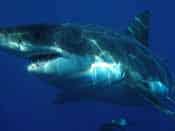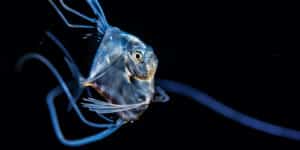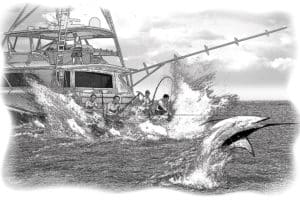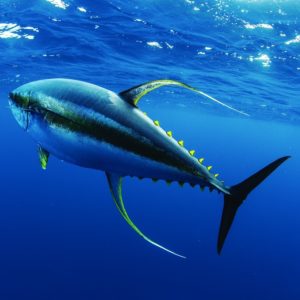
Endangered Great White Shark
California’s Fish and Game Commission decision this week to advance the candidacy of the great white shark to the state’s endangered species list has left some observers scratching their heads, and some are downright pissed.
After all, the great white is already a protected species in California ocean waters, with zero take allowed on the recreational side. What more protection does this shark need?
“There is data showing continued and regular incidental by-catch of great white sharks by inshore set gill nets,” says Geoff Shester, California program director for Oceana, a marine conservation organization that co-authored the petition to place the great white on California’s endangered species list. “Our main objective is to close this gill-net fishery once and forever.”
Whoa, back up for a minute. California was the first state in the U.S. to ban inshore set gill nets off its coast with the passage of Proposition 132 in 1990. This anti-gill-net initiative resulted in a state constitutional amendment eliminating inshore set gill nets within three miles of shore.
Ah, therein lies the rub. Commercial gill-netters continue to set their curtains of death outside the three-mile limit. While their primary targets are California halibut and white sea bass, gill nets are indiscriminate killers, ensnaring everything from whales and sea turtles to protected fish species such as giant (black) sea bass and great white sharks.
The commission’s decision to advance the great white’s candidacy is just one step in a lengthy review process – one that might take a year or more – leading up to a final decision to place the shark on California’s endangered species list. However, this week’s decision also requires that the state develop and enact regulations now to protect the shark, even as the review process advances, according to Shester.
No one at the California Department of Fish and Wildlife (DFW) could confirm this. “We are still evaluating how this affects the gill-net fishery,” said Mike Taugher, communications director for the DFW.
Nor is anyone sure how much time those regulations will take to develop and enact, let alone what they will eventually look like.
Shester and Oceana’s co-petitioners have some ideas. “The type of protections we envision range from complete closure of gill-net fishing to a by-catch cap with observers on board,” Shester reveals. “Or perhaps it’s a seasonal closure or gear modification.”
As you can imagine, commercial fishermen bristle at the thought any new restrictions. I asked one gill-netter, who insisted on remaining anonymous, what he thought of all this. He said, “I’m just trying to make a living, and now they want to take it all away.”
To this I responded, “A car thief could make the same argument.” He hung up on me.
Shester points out that Ocena is not anti-fishing. “We just think there are better, more responsible ways to target fish, such as hook-and-line commercial fishing,” he explained.
Having been intimately involved in the successful campaign behind the ground-breaking Proposition 132, I have longed for the day when the remaining inshore set gill nets were completely banned from California marine waters. And so I heartily commend the work of Oceana and its co-petitioners, Center for Biological Diversity and Shark Stewards.
I might differ with these of these organizations on many other issues, but on this I can agree. Banning gill nets is good for the white shark and good for recreational fishing.







